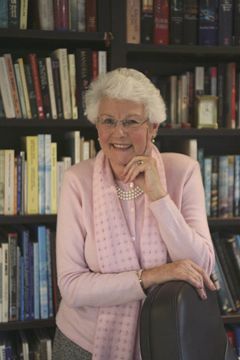Margaret Austin – the key UNESCO figure behind NZ's world heritage starlight reserve hopes
Monday 8 March 2010, 1:18PM
2993 views

If a group in Brasilia vote for world heritage starlight reserves in July, former Cabinet minister Margaret Austin will have played a key part in fighting to get world night sky reserves established.
Austin has been leading a campaign to ensure Tekapo – Aoraki/Mt Cook is one of the first reserves to receive approval if the UNESCO world heritage committee decides to accept some selected night skies as reserves. Prime minister John Key has given $10,000 to the campaign which climaxes in Brasilia in July.
Austin was first approached four years ago to become involved. Tekapo night sky enthusiast Graeme Murray and Canterbury University Professor Phillip Butler approached asked for her help because of her involvement in UNESCO. They knew that world heritage issues were a UNESCO responsibility.
``I have kept the project in front of the officials at the World Heritage centre, have met with other astronomers including Prof Alec Boksenberg, the chair of the National Commission for UNESCO UK and Professor of Astrophysics at Cambridge and Martin Lord Rees, president of the Royal Society London, Astronomer Royal and Master of Trinity College, Cambridge.
``I received a very good reception to my presentation at the launch of the International Year of Astronomy and I have had significant in-put along the way to ensuring adoption of the project by the World Heritage Committee in Brasilia in July.’’
Austin and the starlight reserve working group will seek Martin Lord Rees’s support for the project when he visits Christchurch on March 22 as the Rutherford lecturer for the Royal Society.
Austin said it has been critical to have the support of the Prime Minister as Minister of Tourism and the Minister of Conservation as minister in charge of the Department of Conservation which is the lead agency for world heritage in the lead up to Brasilia.
The principal hurdle has been to include astronomical heritage as important to a number of monuments and sites and as important to landscapes and cultural landscapes. Once that is achieved approval should follow.
Austin said the Mackenzie Working Party needed to know that the people of New Zealand are behind creating a starlight reserve in the Mackenzie. A groundswell of public support has great effect on the international community and will provide stimulus to the efforts to gain the approval of the WHC.
``Everything is political and they thrive on goodwill and tangible support. It is a case of ‘come on NZ – get behind us’. For NZ, world heritage status provides publicity money cannot buy.
``Te Wahipounamu world heritage site on the West Coast of the South Island is a great example of increasing international and domestic tourism from world heritage status. Astro-tourism is already attracting huge numbers particularly from countries where pollution and light are preventing people from seeing the stars.
The Mt John Observatory of the University of Canterbury is the centre for astronomical research in New Zealand with worldwide networks established with astronomers. The night sky in the Mackenzie has received domestic and international attention as pristine, accessible and part of a great experience. ‘’
Austin said the media attention nationally and internationally since this project got underway had been unprecedented and would undoubtedly have had an impact on tourism generally.